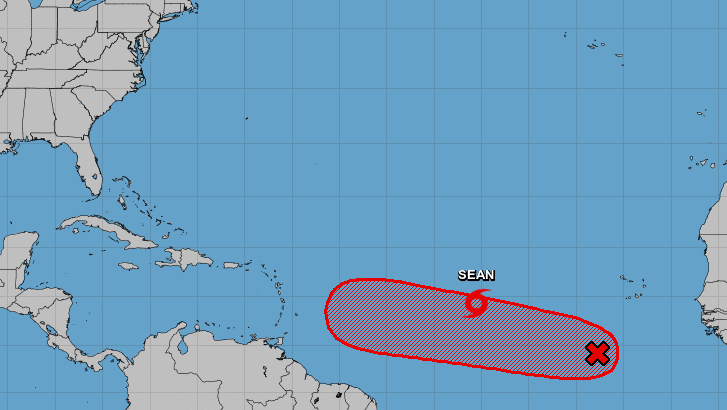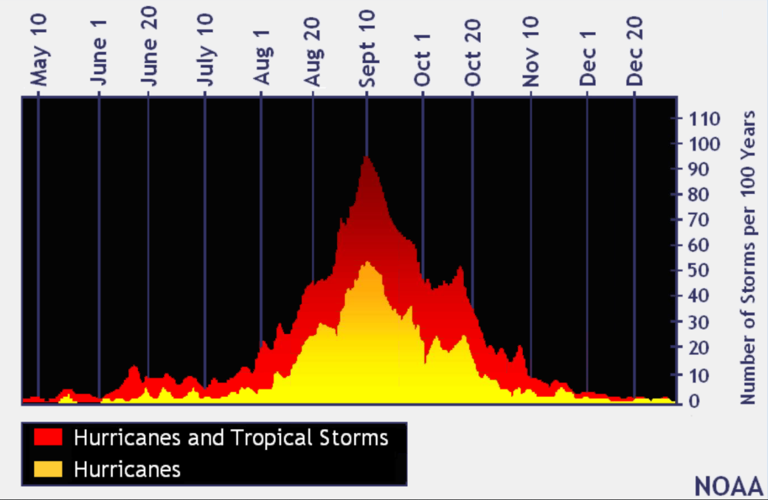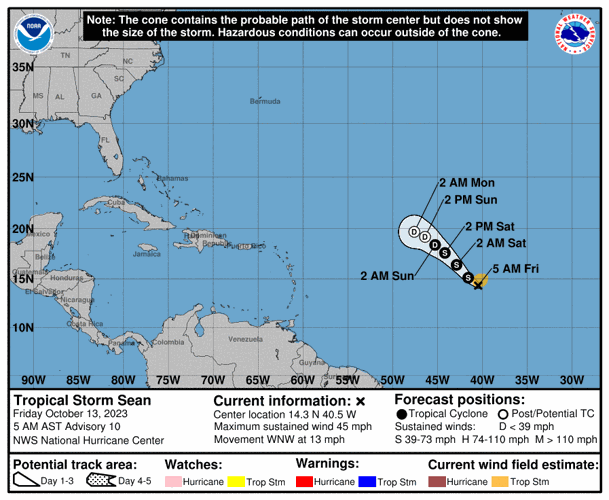Tropical Storm Sean had regained some strength by Friday morning after briefly weakening to a tropical depression the day before, according to the National Hurricane Center.
Located over 1,000 miles west of Cabo Verde, the storm was producing sustained wind speeds of 45 mph and moving west-northwest at 13 mph, hurricane forecasters said Friday.
While Sean could fluctuate in intensity during the next couple of days, forecasters said the storm is likely at its peak intensity now.

It's too early to tell whether the storm could impact the Gulf of Mexico, but Friday's forecast showed Sean degenerating this weekend before ever touching land. The storm hasn't triggered weather alerts in any neighboring lands.
Forecasters started tracking Sean earlier this week as a disturbance near Africa and it reached tropical storm status Wednesday.
Low pressure system near Africa
A broad area of low pressure several hundred miles south-southwest of Cabo Verde is producing disorganized showers and thunderstorms, the National Hurricane Center said Thursday morning.
Forecasters said that while the disturbance is not likely to intensify in the next couple of days, some gradual development is expected early next week as the wave moves west across the central tropical Atlantic. It has a 70% chance of forming within the next week.
The busiest time of hurricane season
We've officially entered what is historically the most active period of the Atlantic hurricane season, so consider this your reminder to get prepared and stay vigilant.

In the last 100 years, the tropics have been the most active in August, September and October, with Sept. 10 being the peak of the Atlantic hurricane season, according to federal forecasters. (graphic via NOAA)
In the last 100 years, the tropics have been busiest from mid-August through October, with Sept. 10 being the peak of the season, according to federal forecasters. About 80% of the systems that have hit the Gulf Coast formed during this time, according to the National Weather Service in Slidell.
The 2023 hurricane season
The return of El Niño was initially expected to bring a wetter second half of the year to Louisiana and a reduced risk of hurricanes.
The National Oceanic and Atmospheric Association's Climate Prediction Center announced March 9 that La Niña, which usually causes more hurricanes to form in the Atlantic, was officially over after an unusually long three years.
El Niño and its sister La Niña are part of the El Niño-Southern Oscillation cycle, a set of conditions over the Pacific Ocean that affects weather patterns across the world. In Louisiana, the biggest effects involve hurricane season in the Atlantic Ocean.
Regardless, this year's first cyclone hit in January, long before the official start of hurricane season, and June alone saw three named storms. Now forecasters are predicting that 2023 will prove to be an above-average hurricane season, with 18 named storms.
The first tropical storm to form in the Atlantic this year was named Arlene, reaching wind speeds of 40 mph on June 2 as it headed for Cuba. Don was the first storm to reach hurricane status in 2023, producing maximum sustained wind speeds of 75 mph on July 22 before rapidly weakening to a tropical storm the following day.
The next storm to form will be named Tammy. Here's the full list of this year's storm names.
Don't miss a storm update this hurricane season. Sign up for our free Hurricane Center newsletter.





